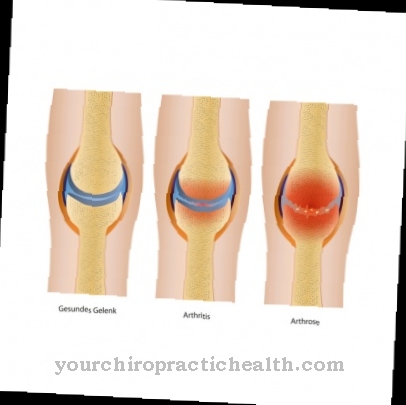Anyone who notices the first wrinkles on the forehead will not worry. However, if the wrinkles become intense and are already reminiscent of "furrows", many sufferers resort to Botox. But there is only one long-lasting success Forehead lift.
What is the forehead lift?

There are many different types of lifts. The forehead lift, a facial lift option, is designed to remove the wrinkles - as the name suggests - on the forehead.
The "upper facelift", as the forehead lift is often called, reduces the wrinkles on the forehead and, as a result, wrinkles on the temples and eyebrows. The forehead lift is performed surgically. As an alternative to inpatient treatment, laser therapies or botox treatments are often carried out; those can be done on an outpatient basis.
Function, effect & goals
There are two options for a forehead lift: Doctors carry out the forehead lift using either an endoscopic procedure or an open method. If the doctor decides to have an endoscopic forehead lift, he makes two to a maximum of four cuts at the hairline.
The cuts are relatively small and mainly serve to open the endoscope. The attending physician can receive an image of the forehead via a monitor. In the second incision, the doctor inserts an instrument with which the skin can be lifted from the tissue and also from the muscles. That is carried down to the eyebrows. Through this method, the medical professional can smooth the patient's tissue. But he can also remove or grind it. If it is necessary to raise the eyebrows, the surgeon pulls in fine threads so that the eyebrows can be raised and then anchored.
The "built-in" thread dissolves itself - within several months. Some medical professionals also choose to anchor the thread behind the ear so that treatment results remain "stabilized". However, the thread that is attached behind the ear must be removed by the doctor as part of a follow-up check.
If there are already pronounced wrinkles or if the doctor determines that an excess of the skin has to be removed, the doctor decides on the open procedure. With the open procedure, the doctor can either make lateral cuts (so-called temporal forehead lift) or cut in the area of the hairline and then peel off the skin up to the browbones.
The temporal forehead lift - i.e. making the side incisions - is recommended if you have already had problems with your brows. Drooping eyebrows also cause wrinkles and wrinkles, which - if the doctor lifts them - can also be treated. However, if the doctor opens the skin at the hairline, he can prepare it in such a way that he gets a direct view of the muscles and the subcutaneous tissue. In this way, the treating doctor not only recognizes dents, but can also remove the excessive growth. Then the doctor folds up the skin and pulls it taut. The excess skin that appears as a result of the tightening is removed. The wound is closed with a fine suture.
After the interventions, the patients are given a pressure bandage consisting of wraps and compresses. In addition, the patients receive a "hood", a tubular bandage made of net, which - similar to a cap - is pulled over the head so that the pressure bandage cannot slip.
Those who opt for a forehead lift can minimize the cross wrinkles on the forehead and between the eyes. A reduction in the vertical frown lines and those wrinkles that appear between the eyebrows can also be removed. The eyebrows can be raised as part of the lifting so that the face looks more youthful. The lid positions can also be positively changed if the eyebrows were already low or slack.
Risks, side effects & dangers
The forehead lift is now a routine procedure. There are hardly any complications or risks. In particular, if the patient has normal wound healing, normal scars can be expected; in many cases no traces of a forehead lift remain. Sometimes, however, unsightly scarring can also occur.
Especially when inexperienced physicians perform the forehead lift, nerve damage can occur, which subsequently leads to symptoms of paralysis. If the hair follicle is injured during the procedure, the hair can no longer grow back at that point.
One of the greatest risks, which, however, lie in the area of aesthetics, are the unnatural, almost mask-like results, which are also referred to as "rigid face". After the procedure, the eyebrows appear asymmetrical, the face petrified and "strange". This is due to the fact that the medical professional tightened the skin too much. As a result, the eyebrows can be "too high", so that an unnatural face is the result.
Even if the forehead lift is a routine procedure, general surgical risks must be considered. These include postoperative bleeding, wound healing disorders, swelling, infections, bruises or the risk of thrombosis (blood clots). The thrombosis can sometimes also lead to an embolism (occlusion of the blood vessel). The doctor must inform the patient of possible complications and risks before the procedure; Even if - as already mentioned - it is a routine procedure and complications are the exception, they still have to be mentioned in a prior consultation.













.jpg)

.jpg)
.jpg)











.jpg)